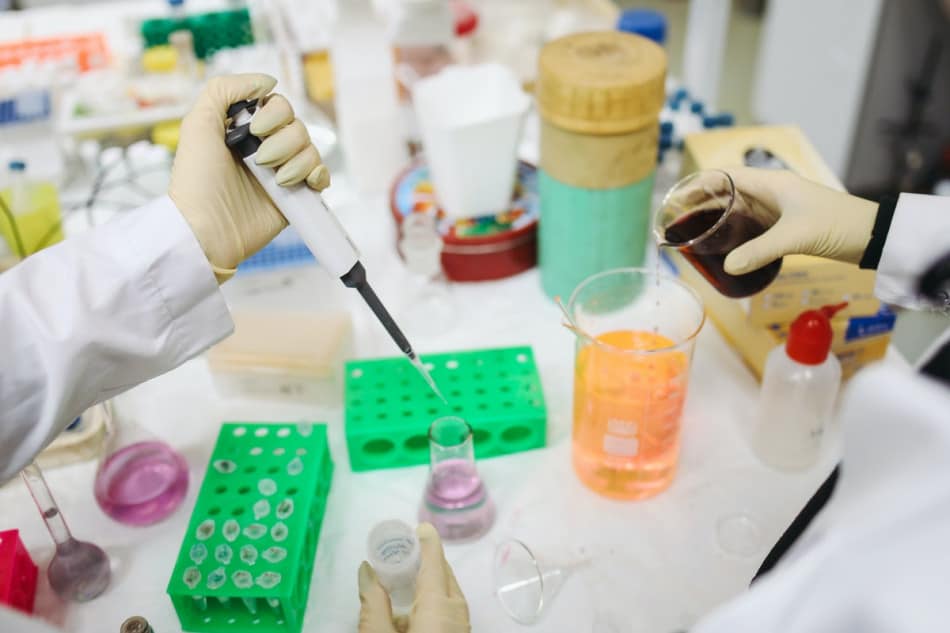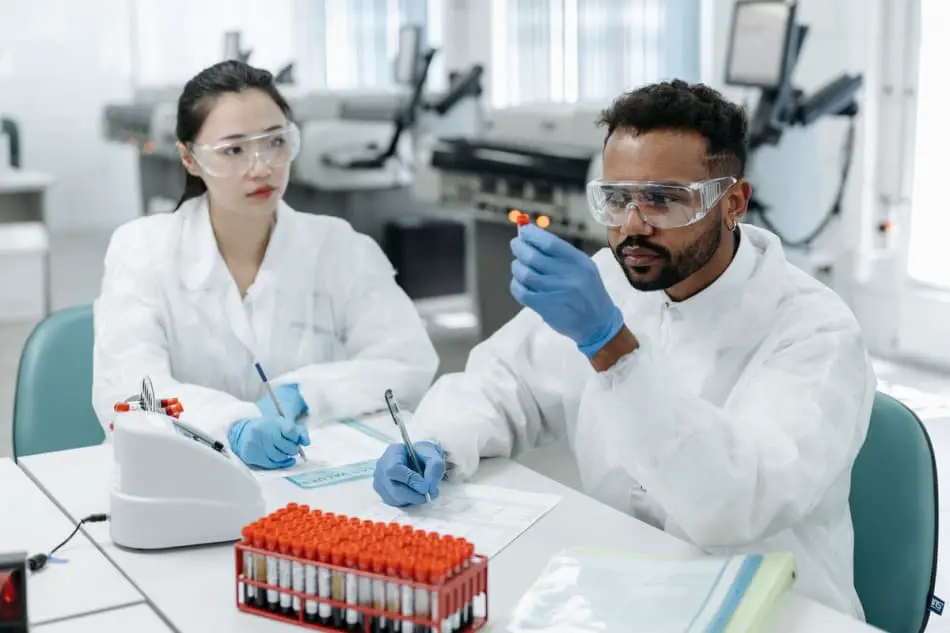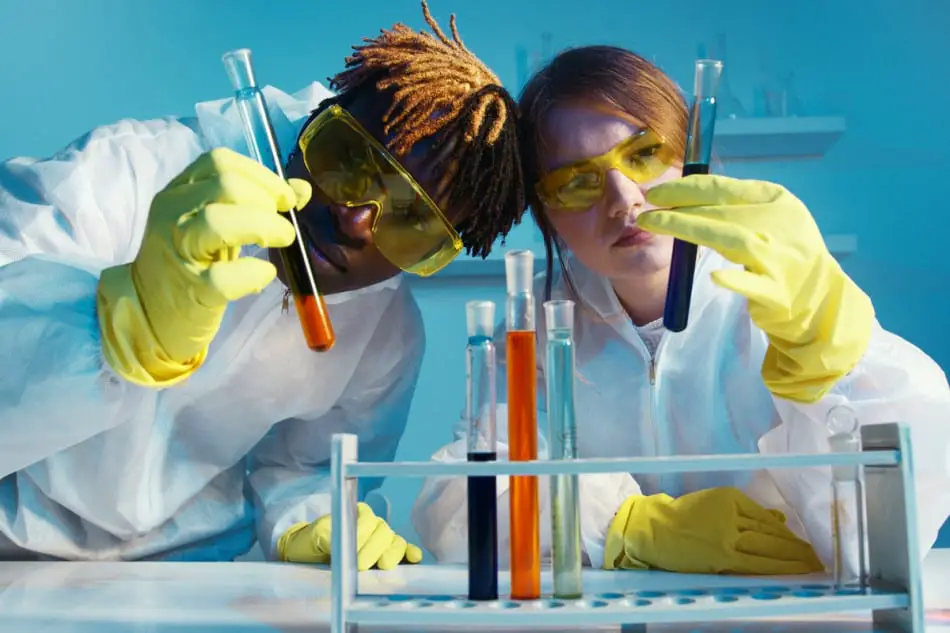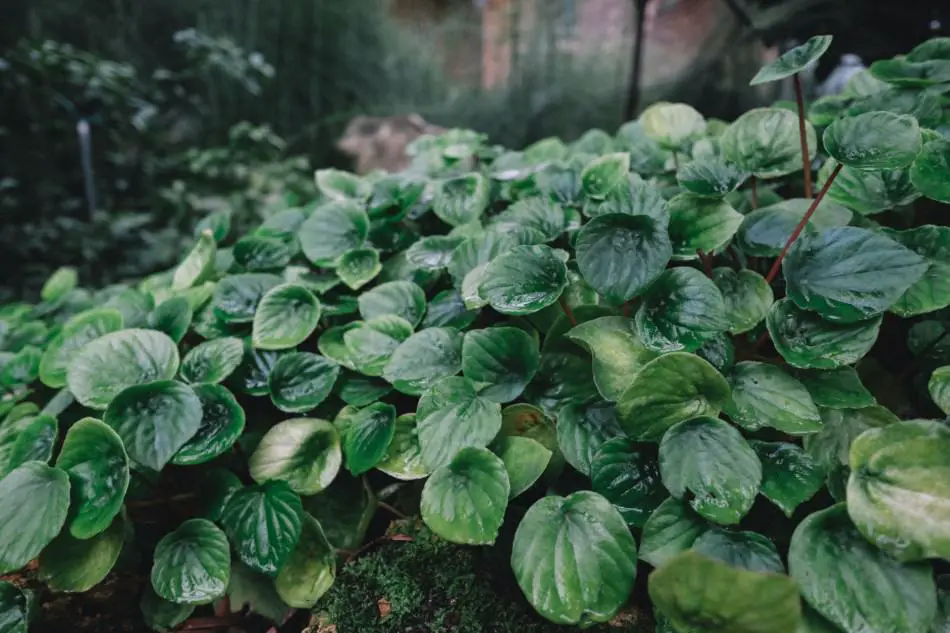Are you fascinated by the microbial world and want to understand it better? Or do you simply need to brush up on your knowledge as part of another course you are taking?
Whatever your reason, it may seem a little daunting to self learn microbiology, but it really needn’t be.
You can teach yourself microbiology by understanding the key concepts (core topics/branches and tools), using free online learning resources, and trying various learning techniques.
In this guide, we will walk you through the proper steps in learning and teaching yourself microbiology, from the foundational concepts to studying strategies you can use.
So, let’s dive right in as we bring microbiology under the microscope!
Why Study Microbiology?
You may be studying microbiology as a course or as a major subject.
As a discipline, those who enrolled in the microbiology program are more likely planning to establish a profession in the fields of medicine, pharmaceuticals, medical research, environmental studies, food technology, and public healthcare.
On the other hand, microbiology is also a subject you’d commonly find in medical and biology courses like nursing, medical technology, biochemistry, clinical epidemiology, molecular biology, etc.
Nonetheless, you don’t exactly need to be enrolled to study microbiology if you’re just fascinated by the subject and want to learn about microorganisms.
You can teach yourself microbiology through multiple resources online, ready at your disposal.
After all, the best reasons to study microbiology are interest and passion. These two factors make the learning process a whole lot easier.
In that sense, here are six steps you can follow to study Microbiology on your own.
-> Read Also What Is An Autodidact?
1. Understand What Microbiology Is

The foundation of learning microbiology is knowing what it is all about, its history, and its application. Without establishing these concepts, you’ll find it more challenging to navigate its subdisciplines.
For starters, you should at least understand that although microbiology is the study of microorganisms, its progress over the centuries has led to cascading concepts such as submicroscopic agents like viruses and disease-causing proteins.
Furthermore, you must learn the broad applications of microbiology. By doing so, you’ll have a better grasp of its significance inside and outside academic study.
For example, microbiology contributes to the advancement of the food industry, cosmetics, healthcare, agriculture, bioelectronics, and practically all other economic and social aspects of humanity.
This is because microbes influence our way of living, both in a good and adverse manner, and so naturally; many people have an interest in understanding more about them.
Lastly, know the history of microbiology and the prominent figures who improved our understanding of microbial identities and interactions.
Recognizing the evolution of the discipline will help you realign your knowledge with its application.
Tip #1: For resources about the history of Microbiology, you can check out the article, A Brief History of Microbiology and Immunology. For more compressed details, you can use Bioexplorer’s Microbiology Timeline as a resource.
2. Know the Branches of Microbiology
A great way to learn microbiology is to categorize the topics based on their branches of subdisciplines.
However, compartmentalization should not be restricted as you may find it challenging to associate the topics with one another.
Instead, after learning one branch, try to compare it with the others and understand their relationships and interactions.
You’ll find the key concepts in these subdisciplines all include identification and classification. Here are the branches of microbiology you should consist of first in your learning process.
Bacteriology: It is the study of bacteria. The fundamentals of general bacteriology focus on the taxonomy or identification of bacteria based on morphological characteristics (i.e., shape, motion, size, cell arrangement, and structure) and chemical parameters (i.e., Gram stain reaction, aerobic requirement).
Mycology: This is the study of fungi. Identification and classification of fungi are also covered in the general premise of the subdiscipline. In the hierarchy of fungi, four subkingdoms are classified based on their reproduction. Further into the line, a fungus is identified based on its features, such as its fruiting body, stem, and spores.
Phycology: It is the study of algae. Algal studies are crucial, especially for those studying marine ecosystems. At the forefront of general phycology is its taxonomy based on colors produced through chloroplast pigments.
Protozoology: The study of protozoa (single-celled organisms feeding on organic matter), protozoology covers the understanding of these microbes and the mechanics of how they infect human beings and other animals. Protozoa can be distinguished through characteristics like mobility, habitat, form, feeding, life cycle, and cellular structure.
Nematology: This is the study of nematodes or roundworms. Nematodes are identified based on morphological features like their head shape, body length, stylet knob shape, number of annules, etc.
Immunology: Immunology focuses on how the immune system wards off disease-causing microbes. This involves studying bacteria, fungi, and viruses that cause infection, their entry point mechanism, growth and reproduction, survival, sterilization, and more.
Parasitology: This subdiscipline covers parasitic microbes like helminths (worms) and protozoa. It explores parasitic transmission, life cycle, contamination, and elimination.
Virology: Virology is the study of viruses. You will learn to correctly identify and classify viruses, their transmission to their hosts, reproduction and cycle, and the severity of disease they cause, along with the possible treatments.
3. Learn the Tools, Equipment & Protocols Used in Microbiology

The heart of microbiology lies in the laboratory protocols and research. With that, it’s essential to understand what tools, equipment, and techniques are involved to grow and identify microorganisms.
For starters, learn the following procedures to establish the fundamental microbiology laboratory knowledge.
Using a Microscope
You can’t learn microbiology without knowing how to use a microscope. This instrument practically opened the science of microorganisms.
When using a microscope, you need the necessary skill to set the optics, use a specific solution to set the objectives in higher magnification, and operate its mechanical parts.
There are different types of micrsoscpes. But it would be best if you start practicing the basic compound miscroscpe.
These videos will provide you instructions on how to use a microscope:
- Basic Microscope Setup and Use
- How Do You Use a Microscope?
- Microscopes and How to Use a Light Microscope (animated)
Microbial Culture Preparation
In microbiology, a microbial culture pertains to the multiplication of microorganisms.
Getting a sample and allowing them to reproduce in a culture media is a crucial step in identifying pathogens (disease-causing microbe), testing disinfections, and conducting studies, in general.
Microorganisms grow and multiple in different ways.
For example, most bacteria and fungi can grow in petri dishes with specific growth media while protozoan cultures are prepared organically using Timothy hay.
Fixation, Staining Techniques, and Identification
Once the cultures produce multiple colonies, a sample is taken and placed in a glass slide for viewing.
But before taking it to the microscope, you have to make sure that its preserved in the glass slide and has proper staining.
For bacteria, staining is a crucial requirement to clearly see the colonies and identify the specimen based on its reaction to the stain.
When all these are met, you can now identify the microbe based on the parameters mentioned before.
Aseptic Methods
Microbes have many roles in maintaining the balance of the ecosystem. But we mostly recognize them for bringing all sorts of diseases.
While this is not true to all types of microorganisms, microbiologist recognize the danger of dealing with microbes in general.
In that sense, it’s only fitting to learn aseptic methods that control and eliminate microbial growth for your safety and protection.
Tip # 2: You can check out free onlines resources for microbiology laboratory techiniques like the microbiologyonline’s Basic Practical Microbiology and Microbiology Series by CDC.
4. Maximize Various Learning Materials Based on Your Learning Style

Online resources are unlimited as far as studying microbiology, or any subject for that matter goes.
Also, you get to have plenty of options when it comes to choosing the learning material that suits your learning style.
Not all people know, but there can be a preferred way of acquiring knowledge based on the type of learner that you are.
This could make the process easier as you become more perceptive with absorbing topic details. It’s important to note that you can have more than one learning style. Use it to your advantage to learn complex microbiology concepts.
These learning styles include visual, auditory, kinesthetic, and reading & writing. Using this information, make use of free learning materials such as the following:
Visual & Auditory
Visual learners understand topics best when they use their sight and get information from materials like infographics, charts, diagrams, and more.
On the other hand, auditory learners comprehend information when they are heard or spoken to by another person, which is why lectures, podcasts, actual conversations, and videos are excellent materials to use.
Videos are arguably a good resource for both types, but only if they don’t focus solely on texts. So, you can also rely on Youtube videos to provide a visual aid for the concepts.
In microbiology, visual learners have various opportunities to get on top of their game, as subtopics often involve identification based on morphological appearance.
Here are learning materials you can use if you’re a visual & auditory learner.
Infographics
Videos
- Youtube tutorials: ATP
- Crash Course Microbiology
- Microbiology lectures by Dr. Julie Wells (for auditory learners)
- Microbiology and Biotechnology (Techniques)
Reading/Writing
The traditional approach to teaching includes learning via reading and writing. While some people may find it tedious, some thrive in this learning style.
If you’re more adept at learning with texts, these are the learning materials you should check out.
Books
Websites
Kinesthetic
Those with a kinesthetic learning style could benefit more from hands-on activities than lectures.
Therefore, they understand the concepts better when they perform experiments, use the microscope, draw images, and practice laboratory techniques.
Practice Quizzes
Doing quizzes online stimulates your brain, which improves learning tremendously. Take advantage of these free quizzes you can answer:
- ProProfs Microbiology Quizzes and Trivia
- Study.com
- Quizizz.com
- Microbiology trivia quizzes
- Microbiology practice questions
- Microbiology picture quiz
- Sporcle all microbiology trivia quizzes and games
5. Use Memorization Techniques
There’s no denying that a huge chunk of microbiology involves memorization of terms that sound far too clinical for casual conversations.
As a result, retaining this bulk of information outside the studying zone is extra tricky.
However, you can absorb the necessary terms and details without straining your brain cells when you employ memorization techniques such as the following:
1. Use Memory Devices
Memory devices can help you recall microbiology jargon, scientific names, and taxonomic classifications. You can choose which one suits the information best.
Acrostics
When using acrostics, use the first letter of the terms classified in a specific order or category:
For example, when remembering the sequence of the taxonomic classification system, you can use “Dear King Philip Came Out For Good Soup.”
This will help you recall DKPCOFGS as the order of the hierarchy, which stands for domain, kingdom, phylum, class, order, family, genus, and species.
Flash Cards
Associating a term or phrase with a definition/information can be challenging if you don’t pay attention to them.
If you’re experiencing difficulties in this area, just create a flashcard where one side bears a question or term, and the other has the answer.
Method of Loci
If you’re familiar with Sherlock Holmes, you may already know that he has an impeccable memory.
He uses the method of loci, where he visualizes a particular place (mansion, library, office) and imagines all the information gathered in one area.
When retrieving a detail, he simply goes to this area and scans objects associated with it.
This can be helpful, especially if you use your imagination often to recall information.
2. Recite the Words Out Loud or Write Them Down
Research supports the idea that reading words aloud helps you in memorization. Likewise, writing them down instead of just reading with your eyes also improves memory retention.
Therefore, when studying for a complex microbiology topic, make sure you’re using all your sense to ensure good recall.
3. Teach Someone Else
Tutoring another person on microbiology allows for better knowledge retention. This is why a group study where one person leads the recall is an effective memorization technique.
Not only do you have the opportunity to remember the terms, but you also improve their association with the topic in question as a whole.
6. Practice Critical Thinking by Reading Journal Articles

The essence of microbial research is having it published in reputable journals like the Microbiology Society, Journal of Clinical Microbiology, and Nature Microbiology.
Reading journal articles will not only keep you up to date with the developments in the microbiology subdisciplines, but it will also allow you to apply your knowledge as you comprehend the details in the research.
Likewise, it will help you develop your critical thinking skill, which is essential in microbiology.
However, there are some challenges in reading microbiology-related articles. First, most journals will require you to pay a fee to complete the entire article.
Second, reading a scientific study from top to bottom can be extra challenging for many people.
The academic tone, abstraction, and overwhelming data can be intimidating and require more mental energy, which is why scientific paper critiquing is considered an advanced skill in microbiology.
Tip #3. If you’re still learning the basics of Microbiology, you can start reading reports or summaries of scientific articles before moving to an actual paper. You can head to reliable websites such as ScienceDirect, where research articles are compressed to the most crucial details.
7. The limitations Of Self Learning Microbiology
The main limitation when self learning microbiology is that you probably won’t be able to get a job as a microbiologist without a formal qualification.
Whilst self learning the topic may satisfy your curiosity or help support a related subject you’re learning about, it likely won’t give you enough credibility when it comes to finding work directly in the field of microbiology.
Most roles will require you to have at least a college degree in Biology or Microbiology.
It’s also possible that you may struggle with some of the more complicated areas of the topic, and would wish for a more experienced teacher to ask questions and help guide your learning a bit more closely.
If that’s the case but you still prefer self studying, then you could look for an online course which combines elements of self learning and support from a tutor.
-> Learn More about Self-Learning vs. Classroom Learning: Which Is Better?
Frequently Asked Questions

Is Learning Microbiology Easy?
Many people don’t find microbiology easy to learn, especially when the concepts go past the nit and gritty.
Part of the reason is that some subtopics like biochemistry, microbial taxonomy, and environmental microbiology take time to learn.
These areas are broad and require memorization, advanced comprehension, and analysis. But not everyone has the grit and patience to do so.
However, those who find microbiology easy to learn are usually people who focus on one concept at a time. Also, they try to develop a sense of balance between understanding the theoretical side of the subject and the laboratory applications involved.
What Is the Best Way to Learn Microbiology?
If you’re targeting a career in the sciences as a microbiologist, the best way to learn the subject is to enroll in one. Mastering microbiology with the reward of learning and qualification is a sound choice.
Self-studying microbiology is only suitable for those who want to understand the discipline, such as entrepreneurs with businesses like breweries, cosmetic production, etc., or those who simply have an interest.
Nevertheless, if you want to make the learning process easier, follow the steps and tips mentioned above.
That way, you can have a general game plan for understanding the concepts and areas you should know.
Is Microbiology Just Memorization?
Contrary to popular belief, microbiology is more than just memorization.
While it is true that you have to be familiar with the many terms, types of microorganisms, and more, you will also have to learn first-hand the laboratory techniques involved in processes like microbial growth and culture, taxonomical identification, etc.
In addition, there are also tons of skills you have to develop, especially in research and bioanalytics.
-> Learn more about the 7 best websites for self-learning
Summary
Immersing in microbiology is not exclusive to the confines of the classroom.
Those who excel in the subject have found supplementary self-study as a crucial factor in their success.
While you can’t completely learn microbiology on your own, you can start knowing the key areas of the subject and pursue a formal training eventually.






